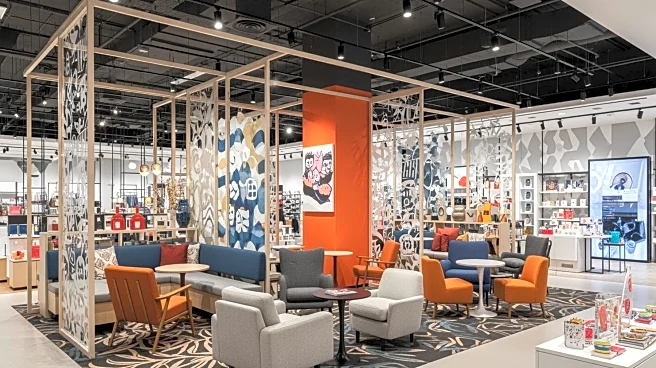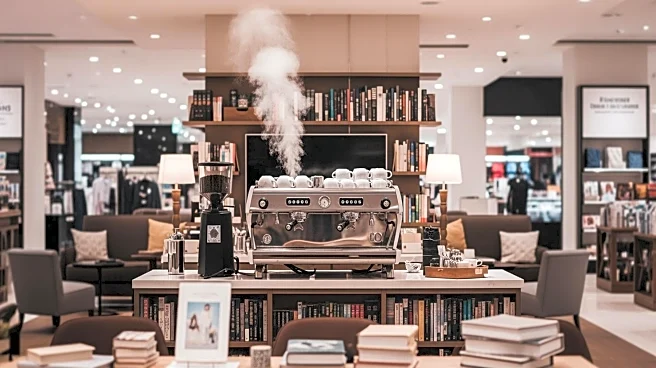What's Happening?
Retailers are increasingly redesigning their stores to serve as 'third places,' aiming to create low-pressure environments where customers can linger between home and work. This concept, originally proposed
by sociologist Ray Oldenburg, focuses on civic hubs like cafes and libraries. However, brands are now incorporating amenities such as seating, listening bars, and in-store cafes to encourage longer visits and foster community engagement. Despite these efforts, the impact on sales remains uncertain, with some retailers successfully creating authentic community spaces while others risk turning them into mere branding exercises.
Why It's Important?
The shift towards creating 'third places' in retail spaces reflects a broader trend of adapting to post-pandemic consumer behavior, where foot traffic has decreased and social isolation has increased. By offering environments that encourage social interaction and community building, retailers hope to enhance brand loyalty and customer experience. This approach could redefine retail strategies, emphasizing the importance of customer engagement over direct sales. However, the challenge lies in balancing authentic community building with commercial interests, as overly branded spaces may fail to resonate with consumers seeking genuine social connections.











